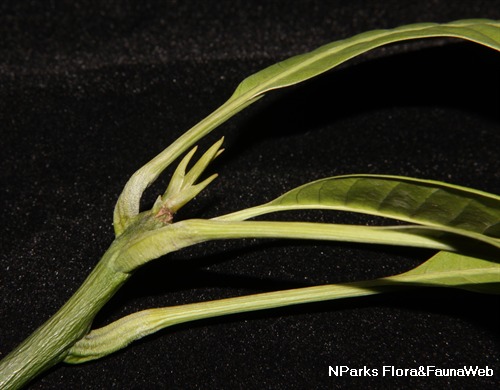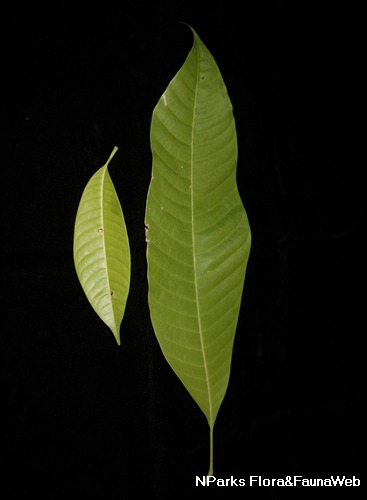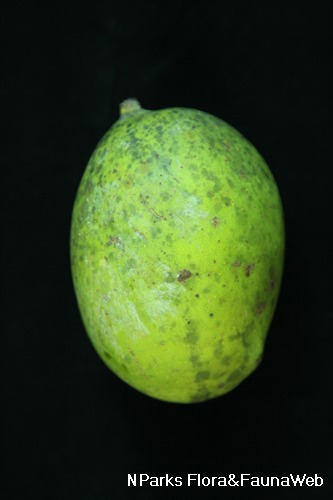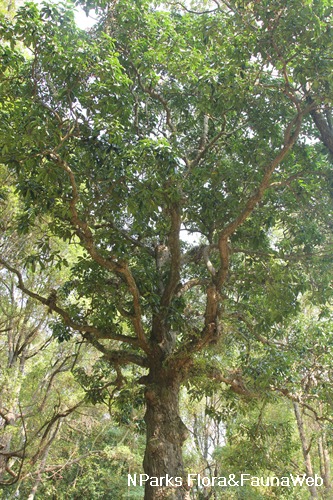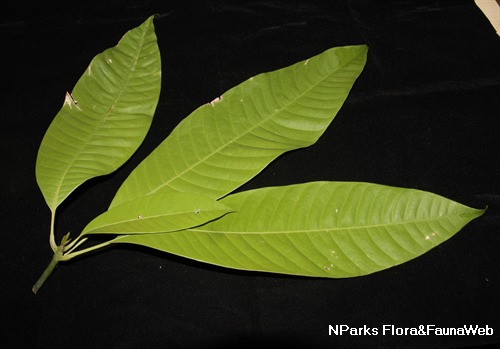
Name
Classifications and Characteristics
| Plant Division | Angiosperms (Flowering Seed Plants) |
|---|---|
| Plant Growth Form | Tree |
Biogeography
| Native Distribution | Peninsular Malaysia to Moluccas |
|---|---|
| Native Habitat | Terrestrial |
| Preferred Climate Zone | Tropical |
Description and Ethnobotany
| Growth Form | A tree that usually 20 – 30 m tall and grow up to 51 m in the wild. |
|---|---|
| Foliage | Leaves are leathery and lanced shaped (10 – 20 cm long). Petiole are long and thickened at the base. |
| Flowers | Flowers are white coloured, fragrant and clustered together to form inflorescence. |
| Fruit | Fruit is oval shaped (about 7 cm long), with one large seed. Fruit turns from green to dark purple when matured. It is fragrant and sweet when the pale yellow pulp is eaten, smelling and tasting like prune. |
| Ethnobotanical Uses | Edible Plant Parts : Edible Fruits Food (Fruit or Vegetable): Fruit reveals edible pale yellow pulp when cut open. The pulp is sweet and taste like prune. |
Landscaping Features
| Desirable Plant Features | Fragrant |
|---|---|
| Landscape Uses | Parks & Gardens, Small Gardens |
Plant Care and Propagation
| Light Preference | Full Sun |
|---|---|
| Water Preference | Moderate Water |
| Plant Growth Rate | Moderate |
| Rootzone Tolerance | Well-Drained Soils |
Foliar
| Foliage Retention | Evergreen |
|---|---|
| Mature Foliage Colour(s) | Green |
| Mature Foliage Texture(s) | Leathery |
| Foliar Type | Simple / Unifoliate |
| Foliar Attachment to Stem | Petiolate |
Non - Foliar and Storage
| Root Type | Underground |
|---|
Floral (Angiosperm)
| Flower Colour(s) | Cream / Off-White |
|---|---|
| Flower Grouping | Cluster / Inflorescence |
Fruit, Seed and Spore
| Mature Fruit Colour(s) | Purple |
|---|---|
| Fruit Classification | Simple Fruit |
| Fruit Type | Fleshy Fruit |
Image Repository
Others
| Master ID | 31726 |
|---|---|
| Species ID | 6125 |
| Flora Disclaimer | The information in this website has been compiled from reliable sources, such as reference works on medicinal plants. It is not a substitute for medical advice or treatment and NParks does not purport to provide any medical advice. Readers should always consult his/her physician before using or consuming a plant for medicinal purposes. |

